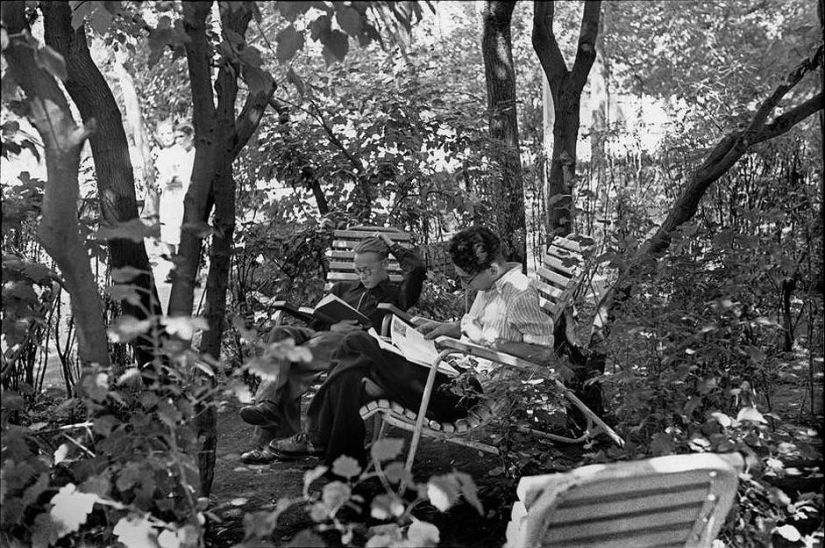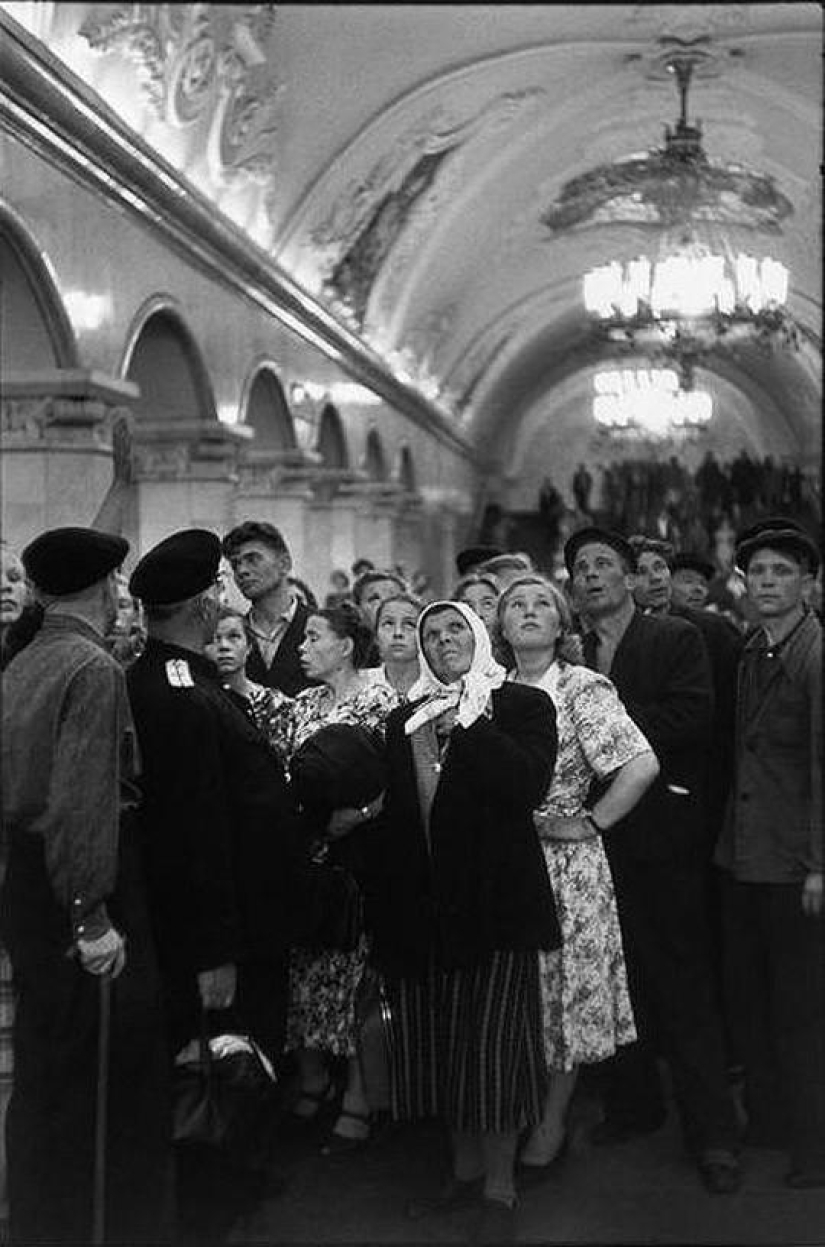25 frames of Henri Cartier-Bresson about Soviet life in 1954
Categories: History
By Pictolic https://pictolic.com/article/25-frames-of-henri-cartier-bresson-about-soviet-life-in-1954.htmlOn January 17, 1955, Life magazine published Henri Cartier-Bresson's photo essay "The People of Russia". The famous Frenchman became one of the first Western journalists who received official permission to photograph ordinary Soviet citizens.
We present you some works from the "Soviet" series of the great photographer.


Henri Cartier - Bresson (1908-2004) visited dozens of countries during his career as a photojournalist. He visited the Soviet Union twice, the first time in 1954.

The result of his trip was the publication in Life magazine in early 1955 and the photo album "Moscow"published in the same year. It was one of the first Western publications about the Soviet Union after World War II.

Moscow. At the pedestrian crossing
In the mid‑1950s, after the publication of the book "The Decisive Moment", the authority of Cartier-Bresson was enormous. "How many words were devoted by various authors in various publications to him and his methods of work," recalled Valery Gende-Rote. — But how can you compare all this with the story of the "living" Bresson himself (he stayed with us in 1958 on the way to China). Cartier-Bresson showed us his book about Moscow." And then Valery Albertovich writes about the impression that Bresson's Moscow photographs made on him: "This quite friendly book does not consist of only masterpieces, but all the pictures published on its pages reflect the photographic credo of the author."

Moscow. Opening of VDNH
The photographer himself expressed his attitude to photos from Russia even more clearly: when selecting images for his official portfolio at the beginning of the XXI century, he did not leave a single (!) photo from Russia. Is it an accident? "Cartier-Bresson was not happy in our country —" said Olga Sviblova, director of the Moscow House of Photography, in 2000. — When he gave me an interview a few years ago, when he started talking about Moscow, he lowered his voice to a whisper and covered the microphone with his hand. Moreover, he did not report anything terrible or secret. It's just that he's been living in fear since the seventies, the habit of hiding something all the time, talking about the Soviet Union or Russia."
But at the same time, Cartier-Bresson was shooting in much hotter spots than Moscow in the 1950s and 1970s, and yet he had little to fear and went on dangerous journeys again and again. Perhaps the master "was not happy in our country" because he felt that it had not opened up to him, that he had not caught in it that cherished "decisive moment"? Unfortunately, we'll never know.

But it remains an indisputable fact that the photojournalist has truly changed the ideas of a whole generation of Russian photographers about documentary photography and the purpose of photojournalism.

Moscow. July Sports Festival at the Dynamo Stadium»

At the Dynamo Stadium»

Leningrad. May 1

Leningrad. Buying a hat in the House of Leningrad trade

Moscow. New buildings

Moscow. In Gorky Park

In the same place (installation of a giant portrait of Gorky)

The girl in the park

Soviet children

Moscow. At a fashion show

Collective farmers on a trip to the metro

Church in Sokolniki

Morning on Red Square

Queue at the mausoleum

Moscow. Cafeteria for construction workers at the Hotel Metropol

Moscow. Vacationers in Serebryany Bor

Moscow School in 1954

In GUM

Street cleaning

Bakery
Keywords: Russian Federation | History | People | Photographer | USSR | 1950s
Post News ArticleRecent articles

19 kilometers from the Indonesian city of Jakarta, there is Bantar Gebang— the largest open landfill in Southeast Asia, where ...

Alexander Ivanovich Zass remained in world history as one of the strongest people. He could carry a horse on his shoulders, tear ...
Related articles

These erotic cards were made in France in the early twentieth century. Unofficially, they were called "French postcards". However, ...

There are surely many old photo albums, which contain black-and-white images of distressed grandparents. This is where you can see ...

The STS TV channel started broadcasting on 1 December 1996. At the time, he was really entertaining, cozy translating foreign ...

The Internet, social networks and computers and laptops themselves have been so long in our lives, so firmly embedded in all its ...